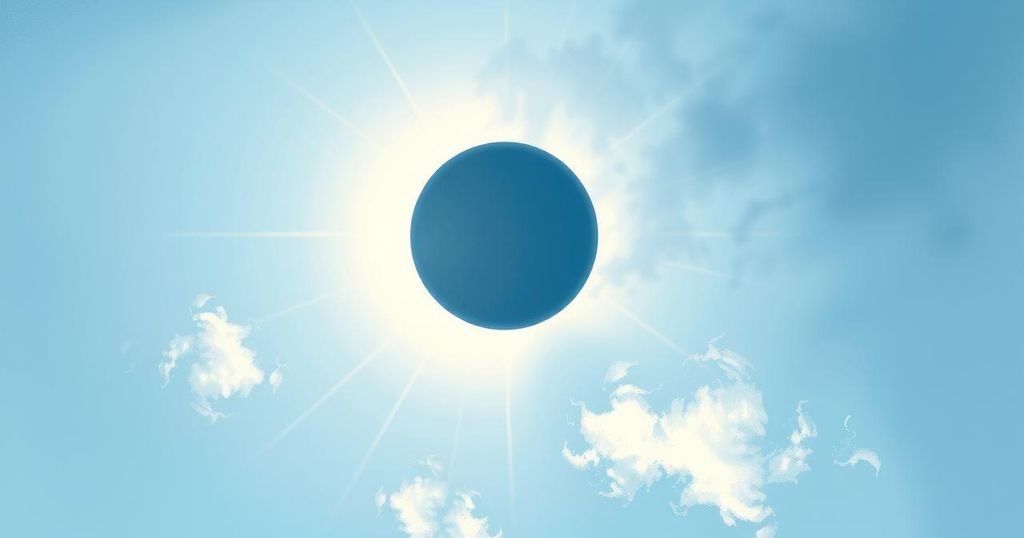Partial Solar Eclipse to be Visible Today Across Northern Hemisphere

A partial solar eclipse is set to occur today, visible across the northern hemisphere, including areas like Canada, Morocco, and Siberia. Lasting approximately four hours, it will begin at 8:50 AM UTC. Observers are urged to use eye protection due to the risk of eye damage. The event follows a recent lunar eclipse and precedes another total solar eclipse in 2026.
Today, a partial solar eclipse will occur, with the moon partially obscuring the sun. This celestial event is visible across parts of the northern hemisphere, including eastern Canada and Siberia. It marks the 17th solar eclipse in the 21st century and the year’s first, lasting approximately four hours, commencing at 8:50 AM UTC and concluding around 12:43 PM UTC.
Astronomer Florent Deleflie of the Paris-PSL Observatory noted that the phenomenon will first be visible to residents in Mauritania and Morocco, while viewers in northern Siberia will witness it last. According to the Time and Space Laboratory at the Paris Observatory, the eclipse will peak at 10:47 AM UTC over northeastern Canada and Greenland, where up to 90% of the sun’s disk will be obscured.
A solar eclipse transpires when the sun, moon, and Earth are aligned. However, this particular event will not experience a total eclipse as the moon’s shadow cone will not make contact with the Earth’s surface. Deleflie elaborated that this partial alignment results in no total eclipse occurring.
In France, the eclipse will be observable from 10:00 AM to 12:00 PM UTC, with sun coverage varying between 10% and 30%, depending on the location. Although this will not be dramatically noticeable to the naked eye, clear skies will allow observers to appreciate the event—provided they use appropriate eye protection. The dangers of viewing an eclipse without protective glasses could cause severe eye damage.
This eclipse follows a total lunar eclipse that showcased a “red” moon two weeks prior. Deleflie has remarked on the commonality of these occurrences in the lunar cycle, highlighting that the moon had completed half of its orbit around the Earth.
The last partial solar eclipse observed in mainland France took place on October 25, 2022. The next major solar event will be a total solar eclipse on August 12, 2026, though it will not directly pass over France, leaving Paris with 92% obscuration and Marseille with 96%.
The partial solar eclipse today demonstrates the wonder of celestial alignments, offering a rare glimpse of the moon obscuring the sun for many viewers across the northern hemisphere. While presenting an exquisite sight, safety precautions are paramount to protect against harmful sunlight. Astronomers have provided insight into the nature of the eclipse, distinguishing it from total eclipses, and noting its occurrence in the context of previous astronomical events. The next significant solar phenomenon is anticipated in 2026.
Original Source: www.jordannews.jo






